Area 51
| Area 51 | |||
|---|---|---|---|
 |
|||
| This satellite image of Area 51 shows dry Groom Lake just northeast of the site. | |||
| IATA: none – ICAO: KXTA | |||
| Summary | |||
| Airport type | Military | ||
| Owner | United States Government | ||
| Operator | United States Air Force | ||
| Location | Southern Nevada, |
||
| Elevation AMSL | 4462 ft / 1360 m | ||
| Runways | |||
| Direction | Length | Surface | |
| ft | m | ||
| 14L/32R | 12,000 | 3,658 | Asphalt |
| 12/30 | 5,420 | 1,652 | Asphalt |
| 09L/27R | 11,440 | 3,489 | Salt |
| 09R/27L | 11,440 | 3,489 | Salt |
| 03L/21R | 10,030 | 3,057 | Salt |
| 03R/21L | 10,030 | 3,057 | Salt |
| 14R/32L | 23,270 | 7,093 | Closed |
Area 51 is a name used in official CIA documents (at least since 1967[1]) for a military base that is located in the southern portion of Nevada in the western United States, 83 miles (133 km) north-northwest of downtown Las Vegas. Situated at its center, on the southern shore of Groom Lake, is a large secretive military airfield. The base's primary purpose is to support development and testing of experimental aircraft and weapons systems.[2][3]
The base lies within the United States Air Force's vast Nevada Test and Training Range. Although the facilities at the range are managed by the 99th Air Base Wing at Nellis Air Force Base, the Groom facility appears to be run as an adjunct of the Air Force Flight Test Center (AFFTC) at Edwards Air Force Base in the Mojave Desert, around 186 miles (300 km) southwest of Groom, and as such the base is known as Air Force Flight Test Center (Detachment 3).[4][5]
Other names used for the facility include Dreamland, Paradise Ranch,[6][7] Home Base, Watertown Strip, Groom Lake,[8] and most recently Homey Airport.[9] The area is part of the Nellis Military Operations Area, and the restricted airspace around the field is referred to as (R-4808N[10]), known by the military pilots in the area as "The Box" or "the Container".[11]
The intense secrecy surrounding the base, the very existence of which the U.S. government barely acknowledges, has made it the frequent subject of conspiracy theories and a central component to unidentified flying object (UFO) folklore.[7][12]
Contents |
Geography
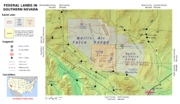
Area 51 shares a border with the Yucca Flat region of the Nevada Test Site (NTS), the location of 739 of the 928 nuclear tests conducted by the United States Department of Energy at NTS.[13] The Yucca Mountain nuclear waste repository is 44 miles (71 km) southwest of Groom Lake.
The same "Area xx" naming scheme is used for other parts of the Nevada Test Site.[14][15]
The original 6-by-10 mile (10 by 16 km) rectangular base is now part of the so-called "Groom box", a 23-by-25.3 mile (37 by 40.7 km) rectangular area of restricted airspace. The area is connected to the internal NTS road network, with paved roads leading south to Mercury and west to Yucca Flat. Leading northeast from the lake, the wide and well-maintained Groom Lake Road runs through a pass in the Jumbled Hills. The road formerly led to mines in the Groom basin, but has been improved since their closure. Its winding course runs past a security checkpoint, but the restricted area around the base extends further east. After leaving the restricted area, Groom Lake Road descends eastward to the floor of the Tikaboo Valley, passing the dirt-road entrances to several small ranches, before converging with State Route 375, the "Extraterrestrial Highway",[16] south of Rachel.
Operations at Groom Lake
Groom Lake is not a conventional airbase, as frontline units are not normally deployed there. It instead appears to be used during the development, testing, and training phases for new aircraft. Once these aircraft have been approved by the United States Air Force or other agencies such as the CIA, operation of that aircraft is generally conducted from a normal air force base.
Soviet spy satellites obtained photographs of the Groom Lake area during the height of the Cold War, and later civilian satellites produced detailed images of the base and its surroundings. These images support only modest conclusions about the base, depicting a nondescript base, long airstrip, hangars and the lake.
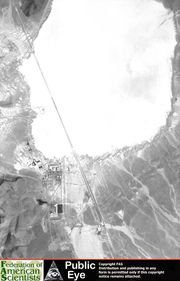
U-2 program
Groom Lake was used for bombing and artillery practice during World War II, but was then abandoned until April 1955, when it was selected by Lockheed's Skunk Works team as the ideal location to test the forthcoming U-2 spy plane.[17][18] The lakebed made an ideal strip from which they could operate the troublesome test aircraft, and the Emigrant Valley's mountain ranges and the NTS perimeter protected the test site from prying eyes and outside interference.
Lockheed constructed a makeshift base at the location, then known as Site II or "The Ranch", consisting of little more than a few shelters, workshops and trailer homes in which to house its small team. In only three months a 5,000-foot (1,500 m) runway was constructed[17] and was servicable by July 1955. The Ranch received its first U-2 delivery on July 24, 1955 from Burbank on a C-124 Globemaster II cargo plane, accompanied by Lockheed technicians on a Douglas DC-3.[17] The first U-2 lifted off from Groom on August 4, 1955. A U-2 fleet under the control of the CIA began overflights of Soviet territory by mid-1956.
During this period, the NTS continued to perform a series of atmospheric nuclear explosions. U-2 operations throughout 1957 were frequently disrupted by the Plumbbob series of atomic tests, which detonated over two-dozen devices at the NTS. The Plumbbob-Hood explosion on July 5 scattered fallout across Groom and forced a temporary evacuation.
The OXCART program

Even before U-2 development was complete, Lockheed began work on its successor as part of the CIA's OXCART project, involving the A-12, a Mach-3 high altitude reconnaissance aircraft — a later variant of which became the famed USAF SR-71 Blackbird. This aircraft flight characteristics and maintenance requirements forced a massive expansion of facilities and runways at Groom Lake in 1960 since the aircraft required an 8,000-foot (2,400 m) runway and additional infrastructure.[19] The main runway was lengthened from 5,000 to 8,500 ft (1,500 to 2,600 m) in autumn 1960.[19] Preparations began for the arrival of OXCART in early 1962: the FAA agreed to close off airspace around Groom Lake, security was greatly enhanced, and the small civilian mine in the Groom basin was closed. The facility received eight F-101s for training, two T-33s for proficiency flying, a C-130 for cargo transport, a U-3A for administrative purposes, a helicopter for search and rescue, and a Cessna-180 for liaison use, and Lockheed provided an F-104 chase plane.[19] The first OXCART was covertly trucked to the base in February 1962, assembled, and it made its first flight 26 April 1962. At the time, the base boasted a complement of over 1,000 personnel. It had fueling tanks, a control tower, and a baseball diamond. Groom saw the first flight of most major Blackbird variants: A-12, the abortive YF-12 interceptor variant, and the D-21 Blackbird-based drone project. The A-12 would remain at Groom Lake until 1968 and occasionally deployed to other United States bases overseas.[1] The SR-71 Blackbird, by contrast, first flew at Palmdale, California in December 1964, and Palmdale and Edwards AFB served as the primary operation sites for that model until Beale Air Force Base became active in early 1966.
Have Blue/F-117 program
The Lockheed Have Blue prototype stealth fighter (a smaller proof-of-concept model of the F-117 Nighthawk) first flew at Groom in December 1977.[20] Testing of a series of ultra-secret prototypes continued there until mid-1981, when testing transitioned to the initial production of F-117 stealth fighters. In addition to flight-testing, Groom performed radar profiling, F-117 weapons testing, and was the location for training of the first group of frontline USAF F-117 pilots. Subsequently, the still highly classified active-service F-117 operations moved to the nearby Tonopah Test Range Airport, and finally to Holloman Air Force Base.
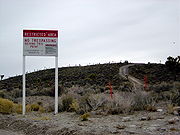
Later operations
Since the F-117 became operational in 1983, operations at Groom Lake have continued. The base and its associated runway system have been expanded[21][22] In 1995, the federal government expanded the exclusionary area around the base to include nearby mountains that had hitherto afforded the only decent overlook of the base, prohibiting access to 3,972 acres of land formerly administered by the Bureau of Land Management.[21]
Commuter service is provided along Groom Lake Road by a bus, catering to a small number of employees living in several small communities beyond the NTS boundary (although it is not clear whether these workers are employed at Groom or at other facilities in the NTS). The bus travels Groom Lake Road and stops at Crystal Springs, Ash Springs, and Alamo, and parks at the Alamo courthouse overnight.
Runways
The base has seven runways including one that now appears to be closed. The closed runway, 14R/32L, is also by far the longest with a total length of approximately 23,300 feet (7,100 m), not including stopway. The other runways are two asphalt runways, the 14L/32R with a length of 12,000 feet (3,700 m) and 12/30 with a length of 5,400 feet (1,600 m), and four runways located on the salt lake. These four runways are 09L/27R and 09R/27L, which are both approximately 11,450 feet (3,490 m), and 03L/21R and 03R/21L, which are both approximately 10,000 feet (3,000 m). The base also has a helipad.[23][24]
In December 2007, airline pilots noticed that the base had appeared in their aircraft navigation systems' latest Jeppesen database revision with the ICAO airport identifier code of KXTA and listed as "Homey Airport".[25] The probably inadvertent release of the airport data led to advice by the Aircraft Owners and Pilots Association (AOPA) that student pilots should be explicitly warned about KXTA, not to consider it as a waypoint or destination for any flight even though it now appears in public navigation databases.[25]
U.S. government's positions on Area 51
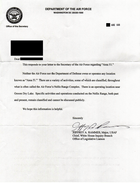
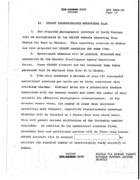
The Federal Government explicitly concedes (in various court filings and government directives) that the USAF has an "operating location" near Groom Lake, but does not provide any further information.
Unlike much of the Nellis range, the area surrounding the lake is permanently off-limits both to civilian and normal military air traffic. Radar stations protect the area, and unauthorized personnel are quickly expelled. Even military pilots training in the NAFR risk disciplinary action if they stray into the exclusionary "box" surrounding Groom's airspace.[12][26]
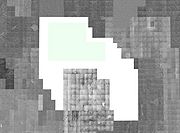
Perimeter security is provided by uniformed private security guards working for EG&G's security subcontractor Wackenhut,[27] who patrol in desert camouflage Jeep Cherokees and Humvees, and more recently, champagne-colored Ford F-150 pickups and gray Chevrolet 2500 4X4 pickups. Although the guards are armed with M16s, no violent encounters with Area 51 observers have been reported; instead, the guards generally follow visitors near the perimeter and radio for the Lincoln County Sheriff. Deadly force is authorized if violators who attempt to breach the secured area fail to heed warnings to halt. Fines of around $600 seem to be the normal course of action, although some visitors and journalists report receiving follow-up visits from FBI agents. Some observers have been detained on public land for pointing camera equipment at the base. Surveillance is supplemented using buried motion sensors.[28]
The base does not appear on public U.S. government maps;[29] the USGS topographic map for the area only shows the long-disused Groom Mine.[30] A civil aviation chart published by the Nevada Department of Transportation shows a large restricted area,[31] but defines it as part of the Nellis restricted airspace. The official aeronautical navigation charts for the area show Groom Lake but omit the airport facilities.[32] Similarly the National Atlas page showing federal lands in Nevada[33] does not distinguish between the Groom block and other parts of the Nellis range. Although officially declassified, the original film taken by U.S. Corona spy satellite in the 1960s has been altered prior to declassification; in answer to freedom of information queries, the government responds that these exposures (which map to Groom and the entire NAFR) appear to have been destroyed.[34] Terra satellite images (which were publicly available) were removed from web servers (including Microsoft's "Terraserver") in 2004,[35] and from the monochrome 1 m resolution USGS data dump made publicly available. NASA Landsat 7 images are still available (these are used in the NASA World Wind). Higher resolution (and more recent) images from other satellite imagery providers (including Russian providers and the IKONOS) are commercially available. These show, in considerable detail, the runway marking, base facilities, aircraft, and vehicles.
Although federal property within the base is exempt from state and local taxes, facilities owned by private contractors are not. Area 51 researcher Glenn Campbell claimed in 1994 that the base only declares a taxable value of $2 million to the Lincoln County tax assessor, who is unable to enter the area to perform an assessment.[36]
Environmental lawsuit
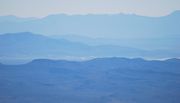
In 1994, five unnamed civilian contractors and the widows of contractors Walter Kasza and Robert Frost sued the USAF and the United States Environmental Protection Agency. Their suit, in which they were represented by George Washington University law professor Jonathan Turley, alleged they had been present when large quantities of unknown chemicals had been burned in open pits and trenches at Groom. Biopsies taken from the complainants were analyzed by Rutgers University biochemists, who found high levels of dioxin, dibenzofuran, and trichloroethylene in their body fat. The complainants alleged they had sustained skin, liver, and respiratory injuries due to their work at Groom, and that this had contributed to the deaths of Frost and Kasza. The suit sought compensation for the injuries they had sustained, claiming the USAF had illegally handled toxic materials, and that the EPA had failed in its duty to enforce the Resource Conservation and Recovery Act (which governs handling of dangerous materials.) They also sought detailed information about the chemicals to which they were allegedly exposed, hoping this would facilitate the medical treatment of survivors. Congressman Lee H. Hamilton, former chairman of the House Intelligence Committee, told 60 Minutes reporter Leslie Stahl, "The Air Force is classifying all information about Area 51 in order to protect themselves from a lawsuit."[37]
Citing the State Secrets Privilege, the government petitioned trial judge U.S. District Judge Philip Pro (of the United States District Court for the District of Nevada in Las Vegas) to disallow disclosure of classified documents or examination of secret witnesses, alleging this would expose classified information and threaten national security.[38] When Judge Pro rejected the government's argument, President Bill Clinton issued a Presidential Determination, exempting what it called, "The Air Force's Operating Location Near Groom Lake, Nevada" from environmental disclosure laws. Consequently, Pro dismissed the suit due to lack of evidence. Turley appealed to the U.S. Court of Appeals for the Ninth Circuit, on the grounds that the government was abusing its power to classify material. Secretary of the Air Force Sheila E. Widnall filed a brief that stated that disclosures of the materials present in the air and water near Groom "can reveal military operational capabilities or the nature and scope of classified operations." The Ninth Circuit rejected Turley's appeal,[39] and the U.S. Supreme Court refused to hear it, putting an end to the complainants' case.
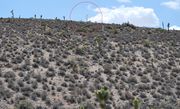
The President continues to annually issue a determination continuing the Groom exception.[40][41][42] This, and similarly tacit wording used in other government communications, is the only formal recognition the U.S. Government has ever given that Groom Lake is more than simply another part of the Nellis complex.
An unclassified memo on the safe handling of F-117 Nighthawk material was posted on an Air Force website in 2005. This discussed the same materials for which the complainants had requested information (information the government had claimed was classified). The memo was removed shortly after journalists became aware of it.[43]
1974 Skylab photography
In January 2006, space historian Dwayne A. Day published an article in online aerospace magazine The Space Review titled "Astronauts and Area 51: the Skylab Incident." The article was based on a memo written in 1974 to CIA director William Colby by an unknown CIA official. The memo reported that astronauts on board Skylab 4 had, as part of a larger program, inadvertently photographed a location of which the memo said:
There were specific instructions not to do this. <redacted> was the only location which had such an instruction.
Although the name of the location was obscured, the context led Day to believe that the subject was Groom Lake. As Day noted:
The memo details debate between federal agencies regarding whether the images should be classified, with Department of Defense agencies arguing that it should, and NASA and the State Department arguing against classification. The memo itself questions the legality of unclassified images to be retroactively classified.
Remarks on the memo,[46] handwritten apparently by DCI (Director of Central Intelligence) Colby himself, read:
He did raise it—said State Dept. people felt strongly. But he inclined leave decision to me (DCI)—I confessed some question over need to protect since:
- USSR has it from own sats
- What really does it reveal?
- If exposed, don't we just say classified USAF work is done there?
The declassified documents do not disclose the outcome of discussions regarding the Skylab imagery. The behind-the-scenes debate proved moot as the photograph appeared in the federal government's archive of satellite imagery along with the remaining Skylab 4 photographs, with no record of anyone noticing until Day identified it in 2007.[47]
UFO and other conspiracy theories concerning Area 51

Its secretive nature and undoubted connection to classified aircraft research, together with reports of unusual phenomena, have led Area 51 to become a focus of modern UFO and conspiracy theories. Some of the activities mentioned in such theories at Area 51 include:
- The storage, examination, and reverse engineering of crashed alien spacecraft (including material supposedly recovered at Roswell), the study of their occupants (living and dead), and the manufacture of aircraft based on alien technology.
- Meetings or joint undertakings with extraterrestrials.
- The development of exotic energy weapons for the Strategic Defense Initiative (SDI) or other weapons programs.
- The development of means of weather control.
- The development of time travel and teleportation technology.
- The development of unusual and exotic propulsion systems related to the Aurora Program.
- Activities related to a supposed shadowy one world government or the Majestic 12 organization.
Many of the hypotheses concern underground facilities at Groom or at Papoose Lake, 8.5 miles south, and include claims of a transcontinental underground railroad system, a disappearing airstrip (nicknamed the "Cheshire Airstrip", after Lewis Carroll's Cheshire cat) which briefly appears when water is sprayed onto its camouflaged asphalt,[48] and engineering based on alien technology. Publicly available satellite imagery, however, reveals clearly visible landing strips at Groom Dry Lake, but not at Papoose Lake.
Veterans of experimental projects such as OXCART and NERVA at Area 51 agree that their work (including 2,850 OXCART test flights alone) inadvertently prompted many of the UFO sightings and other rumors:[7]
The shape of OXCART was unprecedented, with its wide, disk-like fuselage designed to carry vast quantities of fuel. Commercial pilots cruising over Nevada at dusk would look up and see the bottom of OXCART whiz by at 2,000-plus mph. The aircraft's titanium body, moving as fast as a bullet, would reflect the sun's rays in a way that could make anyone think, UFO.[7]
They believe that the rumors helped maintain secrecy over Area 51's actual operations.[12] While the veterans deny the existence of a vast underground railroad system, many of Area 51's operations did (and presumably still do) occur underground.[7]
Several people have claimed knowledge of events supporting Area 51 conspiracy theories. These have included Bob Lazar, who claimed in 1989 that he had worked at Area 51's S-4 (a facility at Papoose Lake), where he was contracted to work with alien spacecraft that the U.S. government had in its possession.[49] Similarly, the 1996 documentary Dreamland directed by Bruce Burgess included an interview with a 71 year old mechanical engineer who claimed to be a former employee at Area 51 during the 1950s. His claims included that he had worked on a "flying disc simulator" which had been based on a disc originating from a crashed extraterrestrial craft and was used to train US Pilots. He also claimed to have worked with an extraterrestrial being named "J-Rod" and described as a "telepathic translator".[50] In 2004, Dan Burisch (pseudonym of Dan Crain) claimed to have worked on cloning alien viruses at Area 51, also alongside the alien named "J-Rod". Burisch's scholarly credentials are the subject of much debate, as he was apparently working as a Las Vegas parole officer in 1989 while also earning a PhD at SUNY.[51]
Portrayal in media and popular culture

Novels, films, television programs, and other fictional portrayals of Area 51 describe it—or a fictional counterpart—as a haven for extraterrestrials, time travel, and sinister conspiracies, often linking it with the Roswell UFO incident. During the 1996 action film Independence Day, the United States military uses alien technology captured at Roswell to attack the invading alien fleet from Area 51. The "Hangar 51"[52] government warehouse of the Indiana Jones films stores, among other exotic items, the Ark of the Covenant and an alien corpse from Roswell. The television series Seven Days takes place inside Area 51, with the base containing a covert NSA time travel operation using alien technology recovered from Roswell.
See also
- Groom Range - mountain range north of the lakebed
- Woomera Prohibited Area - defense and aerospace testing area in Australia
- Kapustin Yar
- Dugway Proving Grounds - Restricted facility in the Utah desert.
References
- General
- Rich, Ben R.; Janos, Leo (1994). Skunk Works: A personal memoir of my years at Lockheed. Boston: Little, Brown. ISBN 978-0-316-74300-6
- Darlington, David (1998). Area 51: The Dreamland Chronicles. New York: Henry Holt. ISBN 978-0-8050-6040-9
- Patton, Phil (1998). Dreamland: Travels Inside the Secret World of Roswell and Area 51. New York: Villard / Random House ISBN 0-375-75385-0
- Area 51 resources at the Federation of American Scientists.
- Leslie Stahl "Area 51 / Catch 22" 60 Minutes CBS Television March 17, 1996, a US TV news magazine's segment about the environmental lawsuit.(Transcript)
- Area 51 related article archive from the pages of the Las Vegas Review-Journal
- Specific
- ↑ 1.0 1.1 Richard Helms (1967-05-15). "OXCART Reconnaissance of North Vietnam". CIA. http://www.foia.cia.gov/docs/DOC_0001471747/0001471747_0017.gif. Retrieved 2010-04-04.
- ↑ DREAMLAND: Fifty Years of Secret Flight Testing in Nevada By Peter W. Merlin
- ↑ Rich, p. 57. Rich describes Groom in 1977 as being "...a sprawling facility, bigger than some municipal airports, a test range for sensitive aviation projects"
- ↑ Area 51 researcher Glenn Campbell claims that AFFTC Detachment 3 is located at Groom, citing the title of a leaked security manual, the mailbox in Henderson, Nevada he believes formerly served Groom, and the NASA biography of astronaut Carl E. Walz who was formerly a manager at AFFTC-DET3 !: Campbell, Glenn. "Area 51 is Edwards DET 3", Groom Lake Desert Rat, 17 June 1996; Biography of Carl E. Walz (Colonel, USAF, Ret.), NASA Lyndon B. Johnson Space Center.
- ↑ Merlin, Peter W."Black Projects at Groom Lake: Into the 21st Century".
- ↑ Rich, p. 56. Rich writes "Kelly [Johnson, the U2's designer] had jokingly nicknamed this Godforsaken place Paradise Ranch, hoping to lure young and innocent flight crews"
- ↑ 7.0 7.1 7.2 7.3 7.4 Jacobsen, Annie (April 5, 2009). "The Road to Area 51". Los Angeles Times.
- ↑ Patton, p. 3, lists Paradise Ranch, Watertown, Groom Lake, and Home Base as nicknames
- ↑ "Homey Airport - KXTA", Daily Aviator (blog), January 11, 2008.
- ↑ FAA aviation chart for the Groom area
- ↑ "R-4808N Fixes and Janet Routes" Dreamland Resort
- ↑ 12.0 12.1 12.2 Lacitis, Erik. "Area 51 vets break silence: Sorry, but no space aliens or UFOs" The Seattle Times, 27 March 2010.
- ↑ "US Department of Energy. Nevada Operations Office. ''United States Nuclear Tests: July 1945 through September 1992'' (December 2000)" (PDF). http://www.nv.doe.gov/library/publications/historical/DOENV_209_REV15.pdf. Retrieved 2010-06-10.
- ↑ NTS map showing the different areas overlaid on topographic map, State of Nevada — Division of environmental protection
- ↑ Annotated NTS map at the Federation of American Scientists website
- ↑ Regenold, Stephen (April 13, 2007). "Lonesome Highway to Another World?". The New York Times. http://travel.nytimes.com/2007/04/13/travel/escapes/13extraterrestrial.html.
- ↑ 17.0 17.1 17.2 Peebles, Curtis (2000). Shadow Flights: America's Secret Air War Against the Soviet Union. Novato, CA: Presidio Press. ISBN 0-89141-700-1
- ↑ Rich, pp. 141-144, details U2 test pilot Tony LeVier scouting the remote area near Death Valley for locations, saying of Groom "I gave it a ten plus [score]... a dry lake bed around three and a half miles around", and describes LeVier showing the lake to U-2 designer Kelly Johnson and CIA official Richard Bissell, and Johnson deciding to locate the runway "at south end of lake"
- ↑ 19.0 19.1 19.2 The OXCART Story, Thomas P. McIninch, CIA Studies Archive, Vol 15, No. 1, 1994, declassified
- ↑ Rich, pp. 56-60
- ↑ 21.0 21.1 Pike, John. "Area 51 Facility Overview", Federation of American Scientists.
- ↑ Motta, Mary (April 23, 2000). "Images of Top-Secret U.S. Air Base Show Growth", space.com: "the photos ... show that the area has significantly expanded since the first images were snapped of the infamous site over 30 years ago."
- ↑ Measurements, runway state and alignment information based upon Google Earth / Digital Globe images as retrieved on December 21, 2007.
- ↑ Jeppesen-Sanderson, Inc. (August 2007). "Jeppesen Flightstar Airport Database". http://www.jeppesen.com/wlcs/index.jsp?section=support&content=technical_flitestar.jsp. Retrieved October 1, 2007.
- ↑ 25.0 25.1 Marsh, Alton K. (January 10, 2008)."Don't ask, don't tell: Area 51 gets airport identifier", AOPA On Line.
- ↑ Hall, George. Skinner, Michael. Red Flag, Motorbooks International, 1993, ISBN 0879387599, p.49: "It is an understatement to say that overflying Dreamland is forbidden..."
- ↑ Patton, p10
- ↑ Poulsen, Kevin. "Area 51 hackers dig up trouble", Security Focus, May 25, 2004.
- ↑ USGS 1:24K/25K Topo map for location UTM 11 605181E 4124095N (NAD27) (map via TopoQuest.com)
- ↑ USGS 1:24K/25K Topo map for geopoint GROOM MINE, NV (map via TopoQuest.com)
- ↑ "Airports and Landing strips, 2002", Nevada Department of Transportation, cf section R-4808N
- ↑ Las Vegas Sectional Aeronautical Chart, National Aeronautical Chart Office, Federal Aviation Administration (last checked September 26, 2008)
- ↑ "Federal lands and Indian reservations", The National atlas of the United States of America, United States Department of the Interior, document ID: pagefed_nv7.pdf INTERIOR-GEOLOGICAL SURVEY, RESTON, VIRGINIA-2003
- ↑ "Corona image". http://www.fas.org/irp/overhead/groom_corona_200567.jpg. Retrieved 2010-06-10.
- ↑ Terraserver image
- ↑ Campbell, Glenn (March 1994). "Secret Base Cheats Local Tax Rolls". The Groom Lake Desert Rat. http://www.ufomind.com/area51/desertrat/1994/rat_05.html. Retrieved July 8, 2007. "In the 93-94 tax year, the Air Force paid taxes of $65,517 on a property assessment (for "Buildings and Improvements" plus "Other Personal Property") of $2,517,781."
- ↑ "Area 51 / Catch 22" segment, 60 Minutes broadcast March 17, 1996.
- ↑ Rogers, Keith (June 4, 2002). "Federal judges to hear case involving Area 51", Las Vegas Review-Journal.
- ↑ US 9th Circuit ruling on Kasza V Browner and related case Frost V Perry, Lake, Widnall
- ↑ "2000 Presidential Determination". http://frwebgate.access.gpo.gov/cgi-bin/getdoc.cgi?dbname=2001_cfr_3v1&docid=3CFRSep19. Retrieved 2010-06-10.
- ↑ "2002 Presidential Determination". Georgewbush-whitehouse.archives.gov. 2002-09-18. http://georgewbush-whitehouse.archives.gov/news/releases/2002/09/20020918-9.html. Retrieved 2010-06-10.
- ↑ "2003 Presidential Determination". Georgewbush-whitehouse.archives.gov. 2003-09-16. http://georgewbush-whitehouse.archives.gov/news/releases/2003/09/20030916-4.html. Retrieved 2010-06-10.
- ↑ Rogers, Keith (May 21, 2006). "Warnings for emergency responders kept from Area 51 workers", Las Vegas Review-Journal.
- ↑ Day, Dwayne A. (January 9, 2006). "Astronauts and Area 51: the Skylab Incident". The Space Review (online). http://www.thespacereview.com/article/531/1. Retrieved April 2, 2006.
- ↑ "Presidential Determination No. 2003-39". Georgewbush-whitehouse.archives.gov. 2003-09-16. http://georgewbush-whitehouse.archives.gov/news/releases/2003/09/20030916-4.html. Retrieved 2010-06-10.
- ↑ "CIA memo to DCI Colby" (PDF). hosted by The Space Review. http://www.thespacereview.com/archive/531.pdf. Retrieved April 2, 2006.
- ↑ Day, Dwayne A. (November 26, 2007). "Secret Apollo". The Space Review (online). http://www.thespacereview.com/article/1010/1. Retrieved February 16, 2009.
- ↑ Mahood, Tom (October 1996). "The Cheshire Airstrip". http://www.serve.com/mahood/nellis/area19/cheshire.htm. Retrieved April 2, 2006.
- ↑ "S4 Sport Model - Cetin BAL - GSM:+90 05366063183 - Turkey / Denizli". Zamandayolculuk.com. http://www.zamandayolculuk.com/cetinbal/s4sportmodel.htm. Retrieved 2010-06-10.
- ↑ Dreamland, Transmedia and Dandelion Production for Sky Television (1996).
- ↑ Sheaffer, Robert (November/December 2004). "Tunguska 1, Roswell 0". Skeptical Inquirer (Committee for Skeptical Inquiry) 28 (6). http://www.csicop.org/si/2004-11/.
- ↑ Rinzler, J.W.; Bouzereau, Laurent (2008). The Complete Making of Indiana Jones. London: Ebury. p. 249. ISBN 9780091926618.
External links
- General
- Dreamland Resort - Detailed history of Area 51
- Roadrunners Internationale, a project covering the history of the U2 and Blackbird projects
- "How Area 51 Works", on HowStuffWorks
- Maps and photographs
- Dreamland Resort's map of Area 51 buildings
- Topographic Map of the Emigrant Valley / Groom area
- Aerial photos from different decades, overlaid with Google Maps interface
- Photographs of McCarran EG&G terminal and JANET aircraft
- Official FAA aeronautical chart of Groom Lake
- Picture gallery
- "Historical pictures of Groom Lake, Groom Lake Mining District" - Department of Special Collections, Digital Image Collections, of the University of Nevada, Reno (accessed January 30, 2009)
|
||||||||||
|
||||||||||||||||||||||||||||||||||||||||||||||||